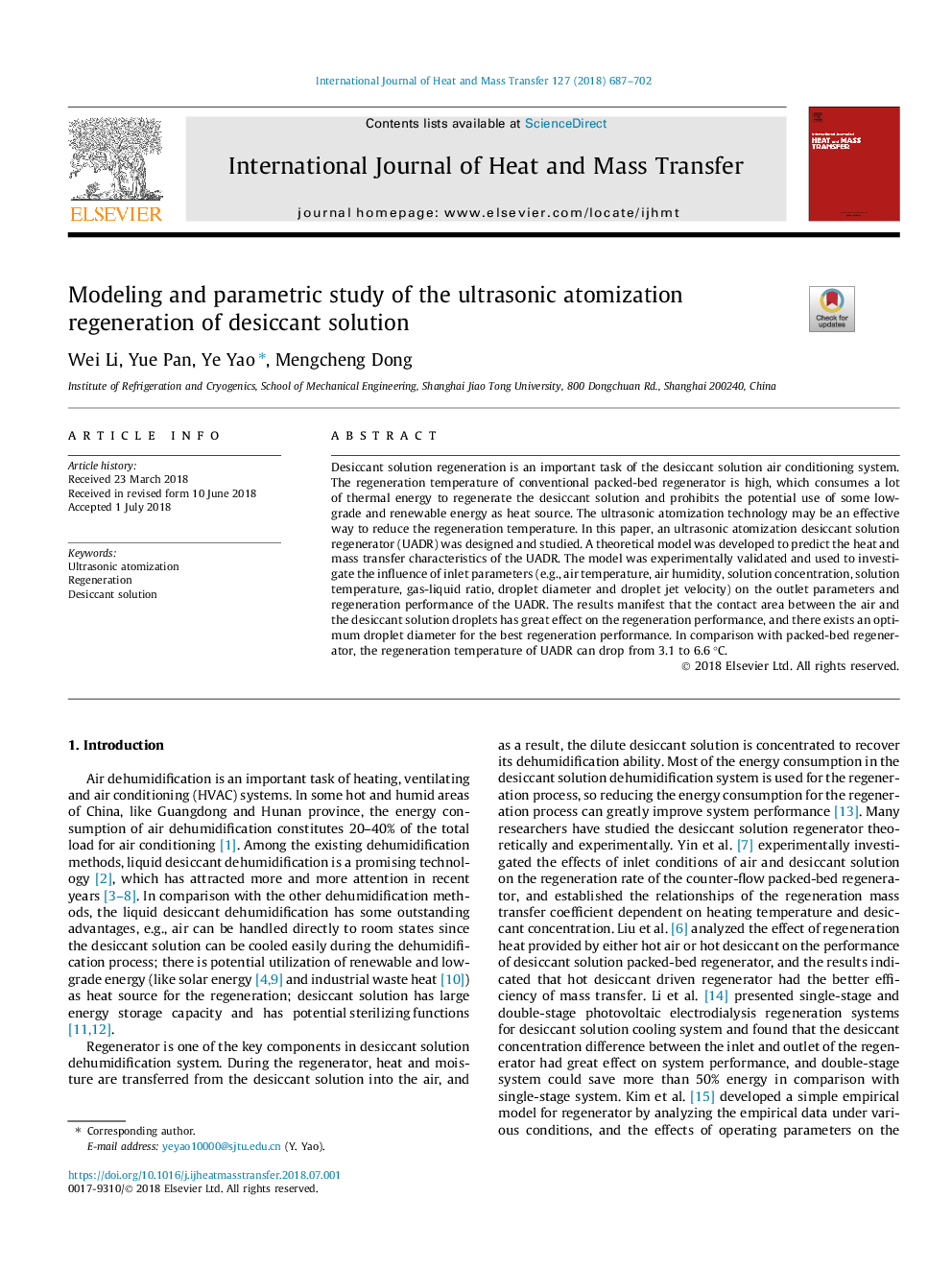| Article ID | Journal | Published Year | Pages | File Type |
|---|---|---|---|---|
| 7053813 | International Journal of Heat and Mass Transfer | 2018 | 16 Pages |
Abstract
Desiccant solution regeneration is an important task of the desiccant solution air conditioning system. The regeneration temperature of conventional packed-bed regenerator is high, which consumes a lot of thermal energy to regenerate the desiccant solution and prohibits the potential use of some low-grade and renewable energy as heat source. The ultrasonic atomization technology may be an effective way to reduce the regeneration temperature. In this paper, an ultrasonic atomization desiccant solution regenerator (UADR) was designed and studied. A theoretical model was developed to predict the heat and mass transfer characteristics of the UADR. The model was experimentally validated and used to investigate the influence of inlet parameters (e.g., air temperature, air humidity, solution concentration, solution temperature, gas-liquid ratio, droplet diameter and droplet jet velocity) on the outlet parameters and regeneration performance of the UADR. The results manifest that the contact area between the air and the desiccant solution droplets has great effect on the regeneration performance, and there exists an optimum droplet diameter for the best regeneration performance. In comparison with packed-bed regenerator, the regeneration temperature of UADR can drop from 3.1 to 6.6â¯Â°C.
Keywords
Related Topics
Physical Sciences and Engineering
Chemical Engineering
Fluid Flow and Transfer Processes
Authors
Wei Li, Yue Pan, Ye Yao, Mengcheng Dong,
